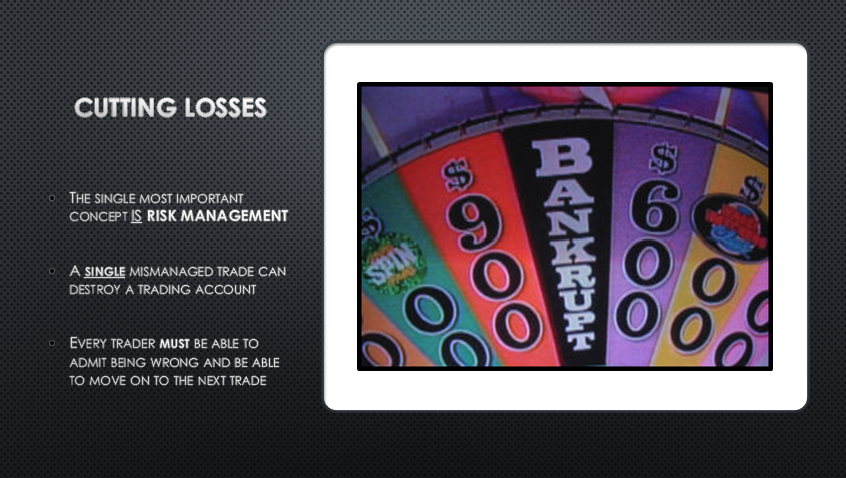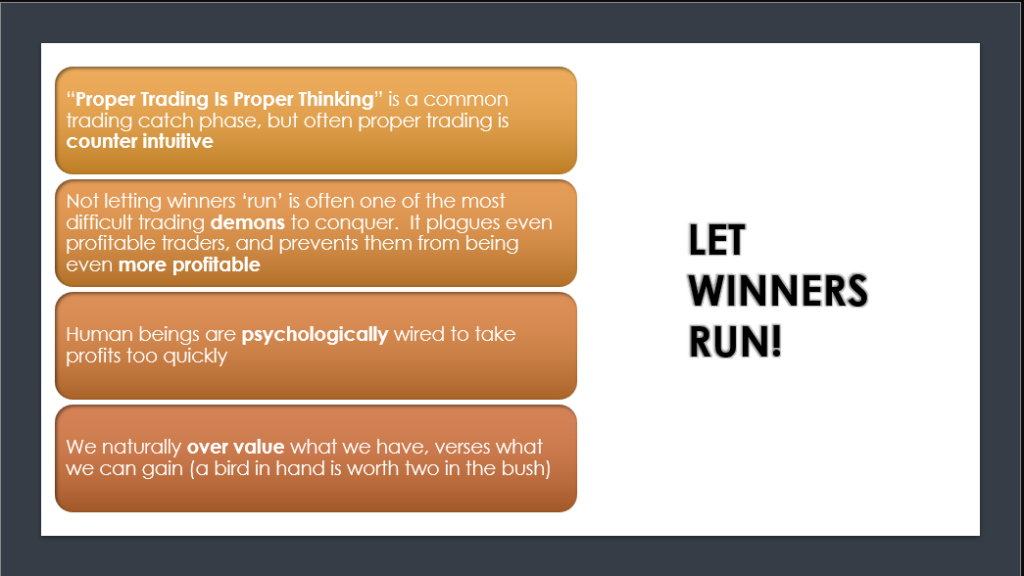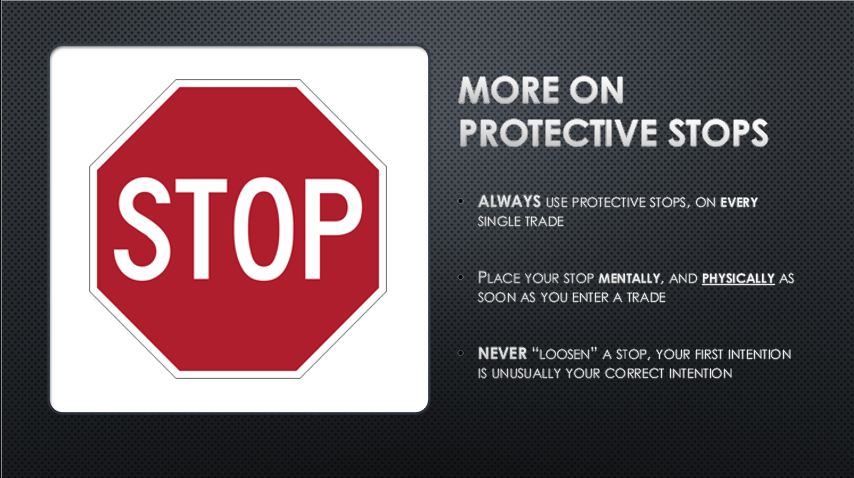Cutting losses is the single most important concept in risk management. It’s important for traders and investors to realize that one mismanaged trade or investment can destroy an entire trading account. Every trader must be able to admit when they are wrong and move onto the next trade. This is not just true in trading, it also holds true in life. Many of these psychological occurrences have broader life lessons in them
Traders must cut their losses! Lots of small losses can be gobbled up by one big gain. As soon as the trade does not act as it is expected to, it is best to just exit the position and move on to the next one. Do not be overly concerned with your wins to loss ratio. This concern can lead to not cutting losses when they are small.
Think about this from the perspective of being an entrepreneur or an inventor. Many times, entrepreneurs and inventors come up with many business ideas or concepts for new products that don’t succeed. The key is that they finally hit on something that does and when they do, they know it and they continue to let it grow and succeed. This also holds true for trading. You need to know when you are in a good position, and when you need to stay in that position. We call that letting your winners run. To summarize:
Cut your losses, and let your winners run!
Proper Trading is Proper Thinking
While this may sound easy to the inexperienced trader, the problem is, changing your thinking is incredibly difficult to execute, as trading logic tends to be counterintuitive. Many of us became successful doing something different from trading. For example: you run a successful business, when times get tough you work harder, you invest more money into your business and you get it running correctly. If you apply this same login in trading, it will lead to a disastrous loss. Adding more money to a bad trade only adds up to more losses. Working harder only leads to overtrading. Putting more time and effort does not always lead to the result that you’re looking for. Some of the best traders only trade in the morning and then walk away from the computer screen as soon as they’ve locked in their profits. This is the counterintuitive part of trading; sometimes less effort applied at the right times leads to greater gains!
Human beings are psychologically wired to take profit too quickly, we are also psychologically wired to nurture losing positions. This tends to happen once we start experiencing loss. With loss, comes the fear of losing. It creates trauma in our mind that leads us to want to have winners, so we take the profits too quickly instead of letting our winning trades run as we are supposed to. Instead, we start to nurse our losers, adding those small profits from our winning trades to try and correct the losing trades. Then we tell ourselves that the loss is too great to take, and it creates a trading death spiral. Every trade is never enough to make up for our large loss, so we don’t take our profits or we take them too soon, adding to our losing positions that we are unwilling to give up on. These psychological pitfalls must be avoided, and the only way that they can be avoided is by having set risk management rules that have a maximum risk per day and a maximum risk per trade. If you were swing trading, you have a maximum risk per week and a maximum risk per trade. If you are investing, you should have a percentage risk per position. The purpose of this is to preserve your entire account. If you don’t have money you’re not in the game any longer.
If you are a Self Directed Trader or Investor, there is only one person who can fire you and that is yourself!
The most important rule of risk management is that you must have protective stops 🛑. Every trade should have a disaster stop out point. They should be written on paper at the very least, and if not written on paper it should be put into the computer as a hard stop. There are lots of ways to enter a hard stop. If you were daytrading using a trading platform like DAS Trader Pro, you can place a hard stop during market hours, or if you are approved for options you can use the corresponding options contract as a stop or hedge against a long or short position.
Regardless of the stop method that you use, the important risk management concept is that you have an “uncle point”, meaning a point where if it’s crossed, you get out of the trade to persevere your capital. You should not loosen a stop; typically your first intention done on impartial analysis before entering the trade is usually the correct location to place your stop. Once you’re in the trade, you are no longer impartial. The emotional effects of monetary gain or loss start to weigh on your decision making process. Therefore, you should not loosen your stop after you have done your initial pre-trade analysis.
In the next blog, we will cover the differences between doubling down/averaging down and averaging in. The nuances between these very similar concepts can make or break a traders account. until next time, trade well!
Written by Michael DiGioia, Director of Education
Mike is available for One-on-One Coaching. Learn More








